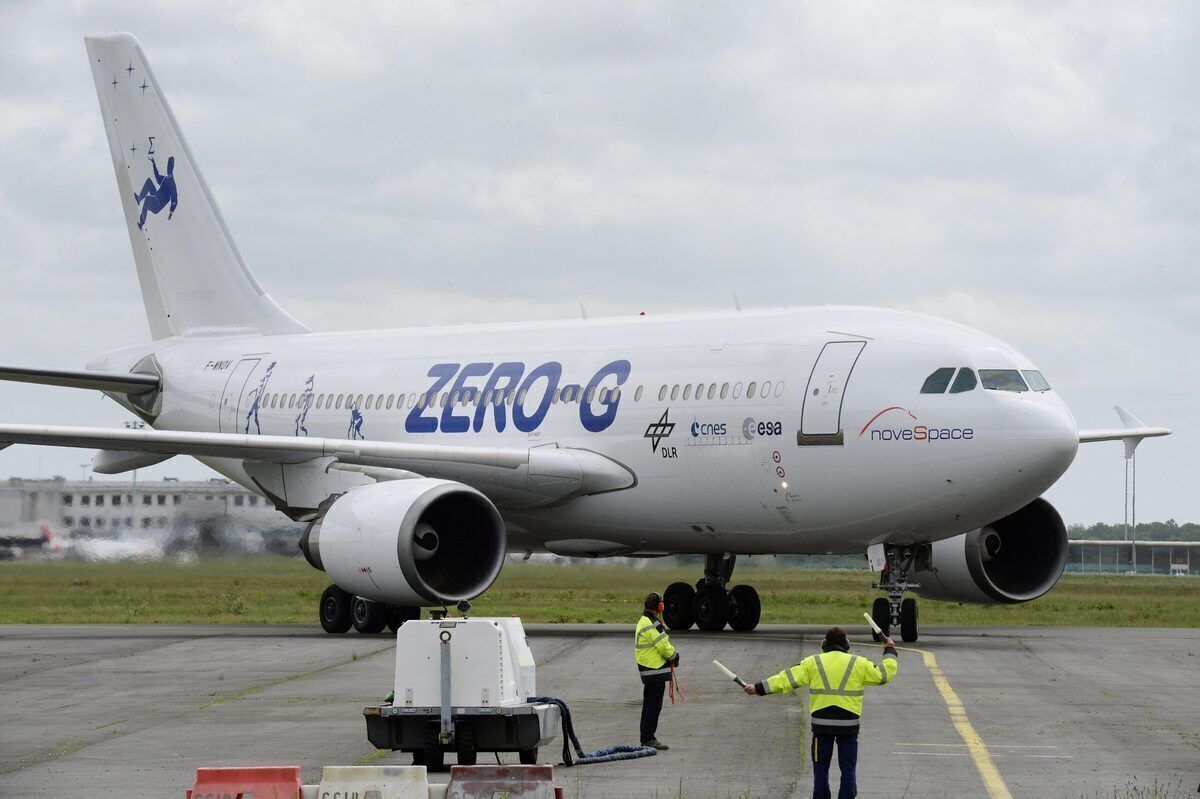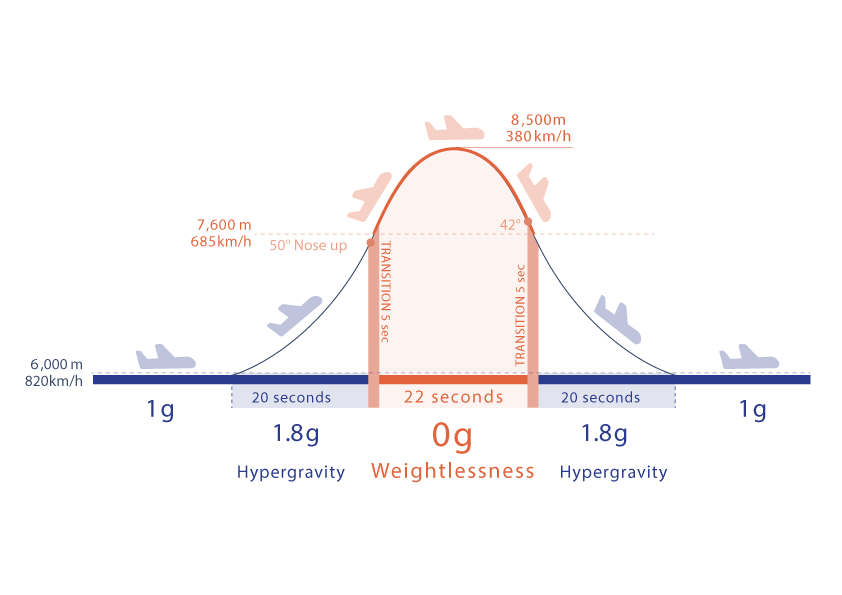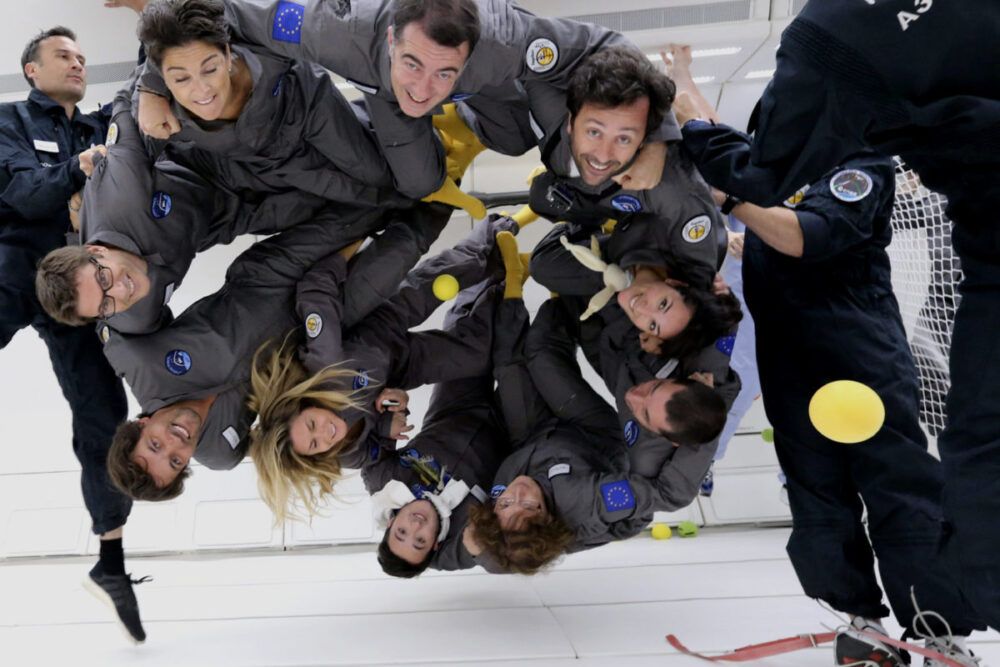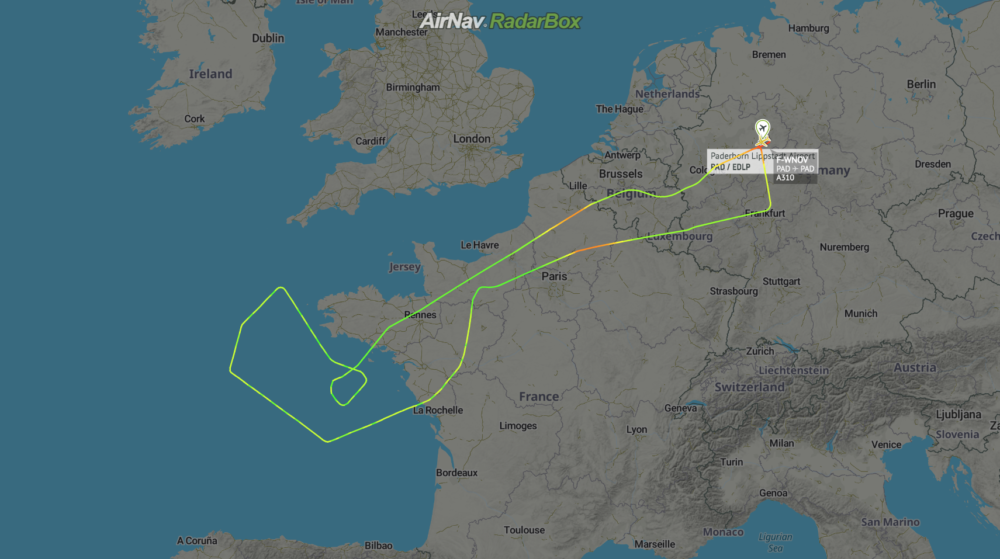Airbus A310s are a rare sight these days, but there is an unusual way to hop on one in the modern era. A unit of the widebody is diving thousands of feet on trips across France and Germany while conducting “zero gravity” flights. Let’s take a look at the aircraft and its operations.
A sense of weightlessness
Parabolic flights reproduce gravity-free conditions in a plane by “alternating upward and downward arcs interspersed with level flight.” A parabolic maneuver during this type of flight is split into three stages. The first is a parabola pull-up. The second is the parabola. The last is the parabola pull-out.
Novespace’s Air Zero G is the sole zero-g operator of these flights in Europe. Over 1,800 people have flown on 217 parabolic flights conducted by the company. Moreover, nearly 800 scientific experiments have been conducted on board the aircraft.
Even though it may seem that these sorts of trips are reserved for scientific experiments, they are actually open to the public. Novespace explains that with fifteen parabolas, passengers would experience the same weightlessness “that astronauts experience in space.” In fact, those taking part are actually joined by astronaut Jean-François Clervoy.
Stay informed: Sign up for our daily and weekly aviation news digests.
The aircraft
Registration F-WNOV conducts these operations. The A310 was flown by Interflug for two years since being introduced in 1989 before the government of Germany took it on. The plane went on to transport the likes of Chancellor Angela Merkel through the years until Novespace acquired it.
To undertake these special flights, modifications had to be made. Therefore, Lufthansa Technics made several changes to the cabin between 2014 and 2015.
“A space to the front of the zero-gravity aircraft cabin was fitted with an experiment area with a ground surface of 100 m2 and a volume of 200 m3 (length: 20 m, width: 5 m, maximum height 2.25 m) for a wide range of microgravity experiments. Stripped of seats and stowage compartments, this area is completely empty. The floor, sides and ceiling were padded with foam for greater passenger safety. Handrails and straps were also added to the area, which is equipped with front and rear security nets,” Novespace shares.
“The Airbus Zero-G cabin has overhead LED lighting. The sides of the aircraft were fitted with 230 V electrical distribution panels and gas extraction equipment. Passenger seats were retained to the rear of the cabin for use during take-off and landing. The aircraft structure, engines and systems were not modified. Special flight instruments were developed and fitted to the cockpit to allow pilots to make parabolic maneuvers.”
One-of-a-kind offering
The altitude before the parabola pull-up is 6,000 m (20,000 ft), and the speed prior is 830 km/h (448 kt). The injection nose-up angle is 50°, and the pull-out nose-down angle is 42°. Additionally, the length of zero gravity is 22 seconds for a cumulative duration of weightlessness of 11 minutes for 30 parabolas.
If you want to have a go at a zero-gravity flight, tickets are currently going for $6700 + 5 % tax per person. It would undoubtedly be a unique experience for anyone onboard! Especially since only 10 A310s are still in passenger service.
What are your thoughts on these zero-gravity flights? Have you ever tried your hand at these sorts of experiences over the years? Let us know what you think of them in the comment section.





